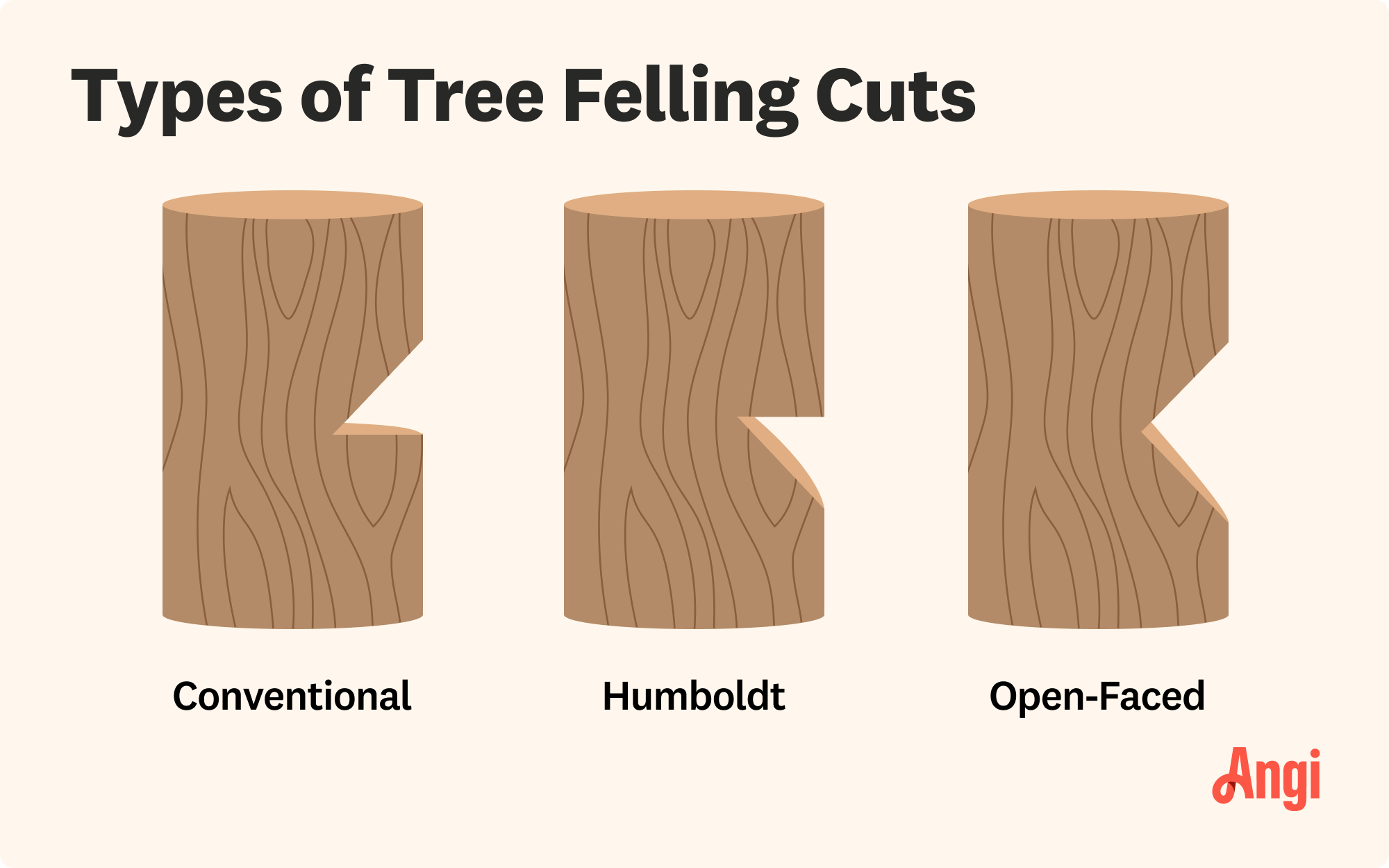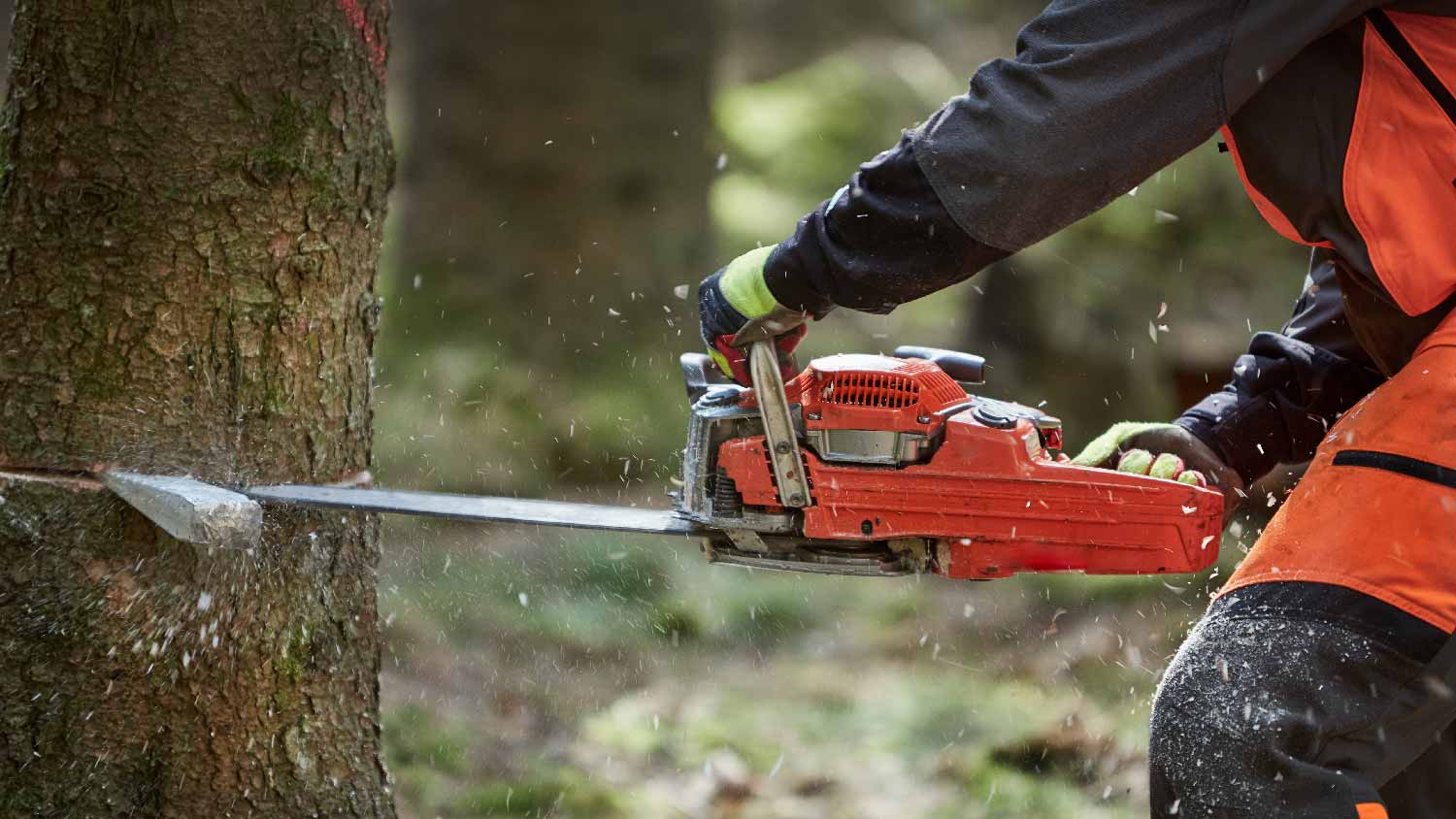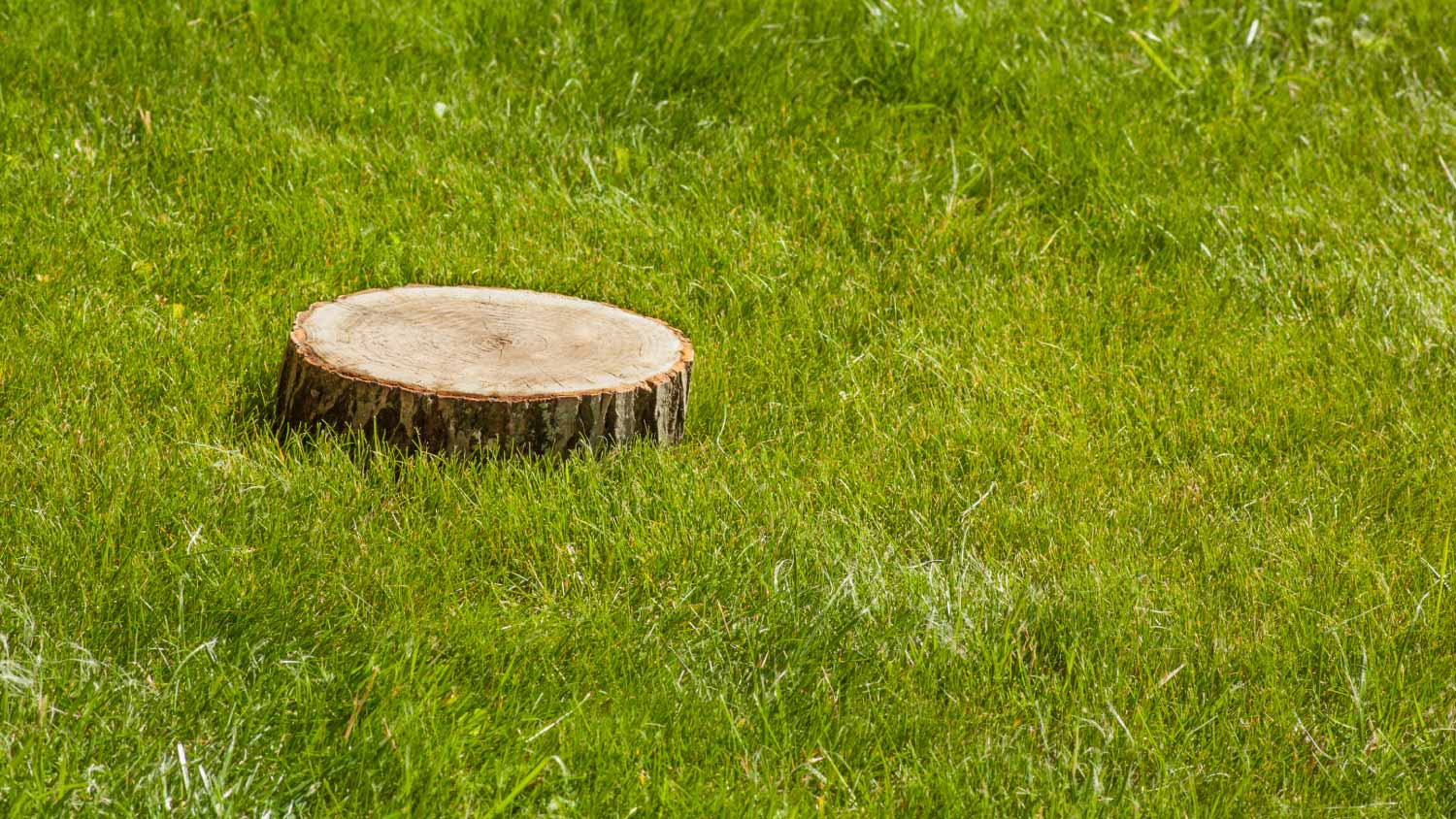
Find out how much it costs to plant a tree based on the number of trees, their size, where you want to plant them, and DIY versus professional costs.
When it comes to taking down a tree safely, technique is everything


Wondering about the best type of tree felling cut to use on a tree in your yard? You’re in the right place. Keep in mind that felling a tree requires wielding potentially dangerous equipment, so it’s best to hire a tree-cutting professional for this task. Let’s review the types of tree felling cuts these pros can use to take down a tree.
Tree felling is the process of cutting down a tree and having it fall in the direction you want it to go. Typically, this involves making angled cuts to create a notch. This notch acts as a hinge, encouraging the tree to fall in the desired direction. To form a notch, a professional will first make a top cut about 1/3 of the way into the tree trunk. Usually, they’ll cut downward at a 45 degree angle, although sometimes the top cut is horizontal. Next, they’ll make the bottom cut, which is often angled upward between 20-45 degrees to meet the top cut. Lastly, the back cut is made on the opposite side of the tree where the notch is; this is usually a horizontal cut.
The exact types of tree felling cuts used will depend on factors such as tree placement, land grade, and skill level. The notch you choose will determine how long the hinge works and when it will break. Here’s a look at the most common types of notches and their pros and cons.


One of the most common tree felling notches is the conventional notch. With the conventional notch, the top cut is angled downwards at 45 degrees and the bottom cut is horizontal.
The back cut should be made at least an inch above the bottom cut. Remember that the back cut is made on the opposite side of the tree. The point of the notch closure is at the middle of the fall.
| Pros | Cons |
|---|---|
| Leaves a lower stump | Danger of tree kicking back as it falls |
| Can be good for split prone trees | Less controlled fell |
| Allows the tree to break easily | The hinge can break early |
Best for: Trees on level ground.
The humboldt notch is typically utilized out west for larger trees and for felling trees on steep hillsides. It is basically an upside-down conventional notch. So, the top cut is horizontal, and the bottom cut is angled upwards 45 degrees.
The back cut should be made at least an inch above the top cut. This technique's point of notch closure is also in the middle of the fall.
| Pros | Cons |
|---|---|
| Can save more usable wood | Higher risk of kickback |
| Can make large trees fall more freely | Difficult notch to master correctly |
| Good for trees that are prone to splitting | Hinge can break early |
Best for: Tall trees on steep slopes and trees that are prone to splitting.
The open-faced notch is considered to be the safest notch to use and has a larger angle than the others. The total angle can be 70 degrees, but a 90-degree angle is ideal. The top cut is angled downward 70 degrees, and the bottom cut is angled upwards 20 degrees.
The back cut is horizontal and should be made level at the corner of the notch. Unlike the other notches, the point of the notch closure for this technique is just before the tree lands on the ground.
| Pros | Cons |
|---|---|
| Less risk of kickback | Leaves a large stump |
| Higher level of accuracy | May have to cut the hinge off |
| Hinge stays intact longer | Takes longer to cut |
Best for: Trees that need a higher level of accuracy, or for felling on slopes.

Felling trees is extremely dangerous and, if done incorrectly, can lead to severe injuries or even death. You should not attempt to do it yourself if you are not properly trained to do so. Homeowners should stick to less dangerous tree tasks, such as pruning or trimming trees.
Trees can kick back towards you, fall in the wrong direction, and even “pinch” the saw to where it is stuck in the tree. Chainsaws can also kick back, causing injuries. In some instances, professionals may even take the tree down in sections because it is too dangerous to fell.
Hiring a professional tree cutting company near you will reduce the risk of property damage and severe or fatal injuries. The average cost for tree removal is around $750, but it can range from $200 to $2,000 or more. However, keeping your property in good condition and staying safe is worth the expense.
I had Ace Fireplace Services install custom chimney caps for my home, and the results are stunning. They fit like a glove and have added a touch of sophistication to my chimney. I can't recommend their services enough.
Great tree company, very professional and honest. Glad we found them, they had the best pricing
We used Unique Hardwood Floor LLC three years ago to work on the floors of a 70 year old home that needed a great deal of work. Some floors needed repairs, some were replaced and others just needed to be refinished. It was a complicated job as they needed to blend the old and the new to...
I play a yearly service fee to get my heat and AC checked out, twice a year. It's awesome. The techs are always great.
Very good service. Will use them again in the future.
They did a great job and were easy to work with. They thinned the trees out while leaving a pleasing shape and setting them up for the next several years. They cleaned everything up and couldn't have been nicer.
He did a great job, gave a reasonable estimate and some advice and took care of the trees, they looked great when he was done. no muss, no fuss.
I've been around the block myself many times and know most of the lingo, angles, tricks and traps of contracting work on a home. And, I've taken the community school contracting licensing classes and heard contractors discuss openly and candidly trade practices and tales both good and bad. ...
From average costs to expert advice, get all the answers you need to get your job done.

Find out how much it costs to plant a tree based on the number of trees, their size, where you want to plant them, and DIY versus professional costs.

Discover what the current average tree removal cost is based on different factors to know how much it will cost to take care of a dead or troublesome tree on your property.

The most significant factor in tree removal costs is the amount of debris. Read on to learn more about the average tree debris removal costs.

Before a tree stump can become rustic decor in your landscape, it’s crucial to protect it from rot, pests, and decay. Learn how to preserve a tree stump.

You don’t have to be a certified arborist to know how to properly stake trees. Use our guide to help provide support to growing roots and vulnerable limbs.

The upkeep and care for your trees should sometimes be left to a professional. Learn all the reasons why so you know when to call an arborist.